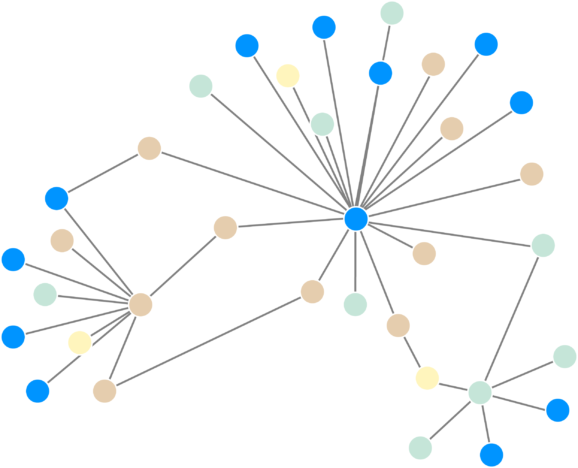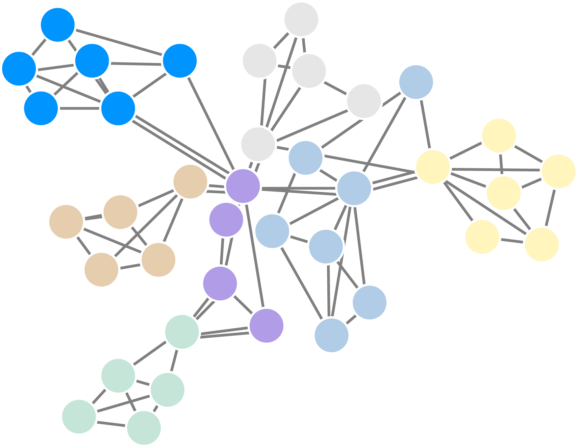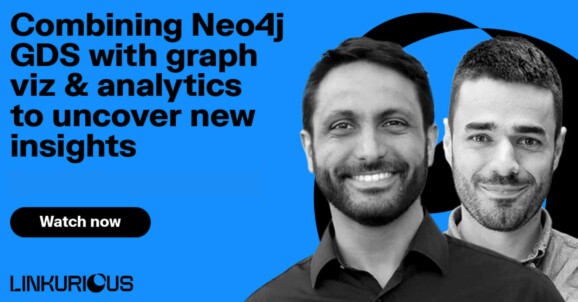Integrating Neo4j GDS and Linkurious Enterprise to supercharge your data analytics capabilities
What’s better than one powerful graph technology? A couple of them together. Linkurious Enterprise graph visualization and analytics software and Neo4j Graph Data Science library for graph analytics and machine learning are two robust graph technologies. When combined together, these two solutions can offer exceptional analytics capabilities to their users to get the most out of their complex connected data, surface hidden insights, faster and easier, to answer business critical questions and make more accurate predictions.
We’ll look at what Neo4j Graph Data Science is and what it can do, as well as some of the algorithms it provides. Then we’ll look at why combining Neo4j GDS and Linkurious Enterprise can empower you to access deeper analytical insights for a range of use cases, for both technical and non-technical users.
The Neo4j Graph Data Science (GDS) library is a plugin for the Neo4j graph database. It adds powerful graph analytics and machine learning capabilities to Neo4j technology, enabling you to perform advanced analytics on your whole graph. Neo4j GDS integrates fully with the Neo4j graph database - no need for a complex architecture.
Available both on premises and on the cloud, Neo4j GDS adds 65+ pretuned graph algorithms and machine learning models that are readily available via the Neo4j browser in a specific environment. These can also be made directly available via the Linkurious Enterprise user interface (more on that a little later).
There are many use cases for Neo4j GDS, including fraud detection, entity resolution, supply chain optimization, recommendation, and more.
Neo4j GDS offers a wide range of graph algorithms. These have been built to help users make sense of even the largest graphs. Following are the main categories of algorithms with examples, and how you could apply them.
Pathfinding algorithms in GDS include shortest path, a* shortest path, minimum weight spanning tree, and depth first search. An example of an application would be to understand if, in a banking context, a client is indirectly connected to a politically exposed person (PEP).
Centrality algorithms, which include degree centrality, closeness centrality, and PageRank, enable you to determine the importance of an entity or entities. You could use this to determine among a group of suspicious entities, which one is the most likely to be the ringleader.

Link prediction algorithms include total neighbors, Adamic Adar, and preferential attachment. They help predict new links between pairs of nodes. They can be used to predict how likely two individuals are to know each other based on their relationships with others.
Community detection algorithms include connected components, label propagation, and louvain modularity. They are used to identify nodes sharing similar characteristics. Community detection algorithms can help determine if an identified fraudster is part of a larger network, for example.

Similarity algorithms include Euclidean distance, cosine similarity, and node similarity. They help identify similar nodes and can be used to identify whether two nodes are likely to be referring to the same entity. You can use these for example to find criminal networks that have a similar structure to an already-known network.
Embeddings algorithms include Node2Vec, RandomProjections, and GraphSAGE. These are used to see how to turn complex information about nodes and relationships into a set of vectors that can be used for machine learning purposes.
Linkurious Enterprise is a powerful yet intuitive graph data analysis tool that uses graph analytics and visualization to unlock the power of your connected data. It provides both technical and non-technical users with a deep understanding of relationships and context to drive better decision making.
Neo4j GDS effectively supercharges Linkurious Enterprise. The algorithms mentioned above can help you compute risk scores, rank the importance of nodes, detect communities, and more. These can be used in Linkurious Enterprise to generate more relevant alerts and provide visual cues during the analytical process.
Since Linkurious is built for both technical and non-technical users, it easily makes the powerful analytics of Neo4j GDS available to all, not just data scientists. Linkurious Enterprise also provides easy to use APIs, making it easy to go to and from the graph platform.
To go deeper on the subject and understand how you can apply Linkurious Enterprise and Neo4j GDS together, watch the replay of our recent webinar on the subject. See step by step how these two softwares can be combined to enhance risk scoring in a financial crime context at a financial institution.
A spotlight on graph technology directly in your inbox.
